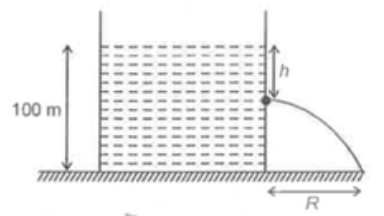Can liquid ⇔ gas equilibrium be attained in an open vessel ? If not why?
To determine whether liquid-gas equilibrium can be attained in an open vessel, we need to analyze the behavior of the liquid and gas phases in such a scenario. Here’s a step-by-step breakdown of the reasoning:
1. Understanding Liquid-Gas Equilibrium:
- Liquid-gas equilibrium occurs when the rate of evaporation of the liquid equals the rate of condensation of the gas back into the liquid. This means that the amount of liquid and gas remains constant over time.
2. Setting Up the Scenario:
- Consider a vessel containing a liquid (e.g., water) that is open to the atmosphere. In this case, the liquid is exposed to air, allowing for the possibility of evaporation.
3. Evaporation Process:
- When the liquid is exposed to air, it begins to evaporate. Molecules at the surface of the liquid gain enough energy to overcome intermolecular forces and escape into the gas phase.
4. Gas Escape in an Open Vessel:
- In an open vessel, as the liquid evaporates, the gas molecules (water vapor) that form can escape into the surrounding environment. This means that the vapor does not remain in the vessel.
5. Continuous Evaporation:
- Since the gas is escaping, there is always space available for more liquid to evaporate. This leads to a continuous process where more liquid is converted to gas, and the gas that forms continuously leaves the vessel.
6. Lack of Equilibrium:
- Because the gas is escaping, the concentration of vapor in the vessel does not reach a point where it can balance with the rate of evaporation. As a result, the liquid will continue to evaporate until it is completely converted into gas.
7. Conclusion:
- Therefore, liquid-gas equilibrium cannot be attained in an open vessel because the gas phase is not contained; it escapes, preventing the establishment of a balance between the rates of evaporation and condensation.
Final Answer:
Liquid-gas equilibrium cannot be attained in an open vessel because the gas formed from the liquid continuously escapes into the atmosphere, preventing the establishment of a balance between the evaporation of the liquid and the condensation of the gas.
- Liquid-gas equilibrium occurs when the rate of evaporation of the liquid equals the rate of condensation of the gas back into the liquid. This means that the amount of liquid and gas remains constant over time.
- Consider a vessel containing a liquid (e.g., water) that is open to the atmosphere. In this case, the liquid is exposed to air, allowing for the possibility of evaporation.
- When the liquid is exposed to air, it begins to evaporate. Molecules at the surface of the liquid gain enough energy to overcome intermolecular forces and escape into the gas phase.
- In an open vessel, as the liquid evaporates, the gas molecules (water vapor) that form can escape into the surrounding environment. This means that the vapor does not remain in the vessel.
- Since the gas is escaping, there is always space available for more liquid to evaporate. This leads to a continuous process where more liquid is converted to gas, and the gas that forms continuously leaves the vessel.
- Because the gas is escaping, the concentration of vapor in the vessel does not reach a point where it can balance with the rate of evaporation. As a result, the liquid will continue to evaporate until it is completely converted into gas.
- Therefore, liquid-gas equilibrium cannot be attained in an open vessel because the gas phase is not contained; it escapes, preventing the establishment of a balance between the rates of evaporation and condensation.
Liquid-gas equilibrium cannot be attained in an open vessel because the gas formed from the liquid continuously escapes into the atmosphere, preventing the establishment of a balance between the evaporation of the liquid and the condensation of the gas.
Topper's Solved these Questions
- EQUILIBRIUM Book:ICSEChapter:EQUILIBRIUM Exercise:SHORT ANSWER TYPE QUESTIONS
Explore 44 Videos
- EQUILIBRIUM Book:ICSEChapter:EQUILIBRIUM Exercise:ESSAY (LONG ANSWER) TYPE QUESTIONS
Explore 17 Videos
- EQUILIBRIUM Book:ICSEChapter:EQUILIBRIUM Exercise:REVIEW EXERCISES
Explore 105 Videos
- ENVIRONMENTAL CHEMISTRY Book:ICSEChapter:ENVIRONMENTAL CHEMISTRY Exercise:NCERT TEXT-BOOK EXERCISE
Explore 20 Videos
- HYDROCARBONS Book:ICSEChapter:HYDROCARBONS Exercise:NCERT TEXT-BOOK EXERCISES
Explore 46 Videos
Similar Questions
How is liquid -vapour equilibrium attained in a closed vessel.
View SolutionEquilibrium can be achieved only in an open vessel. (T/F)
View SolutionName the electrolyte taken in the open vessel.
View SolutionOne mole of PCl5 is heated in a 2L vessel. When equilibrium is attained, the vessel is found to contain 0.2 moles of PCl5 Calculate the equilibrium constant.
View SolutionCan equilibrium be achieved between water and its vapour in an open vassel ? Explain.
View SolutionWhy does the boundary between liquid phase and gaseous phase disappear on heating a liquid upto critical temperature in a closed vessel ? In this situation what will be the state of the substance ?
View SolutionSolid ⇔ liquid equilibrium can be achieved only at melting point of the substance.
View SolutionIn a solid ⇔ liquid equilibrium , temperature remains constant.
View SolutionFor the reaction H2(g)+I2(g)⇔2HI(g), the equilibrium can be shifted in favour of product by
View SolutionFor maximum range R an orifice is made at the depth of h from the upper surface of incompressible liquid. If the height of liquid column in open vessel is 100 m then the value of h is

View Solution